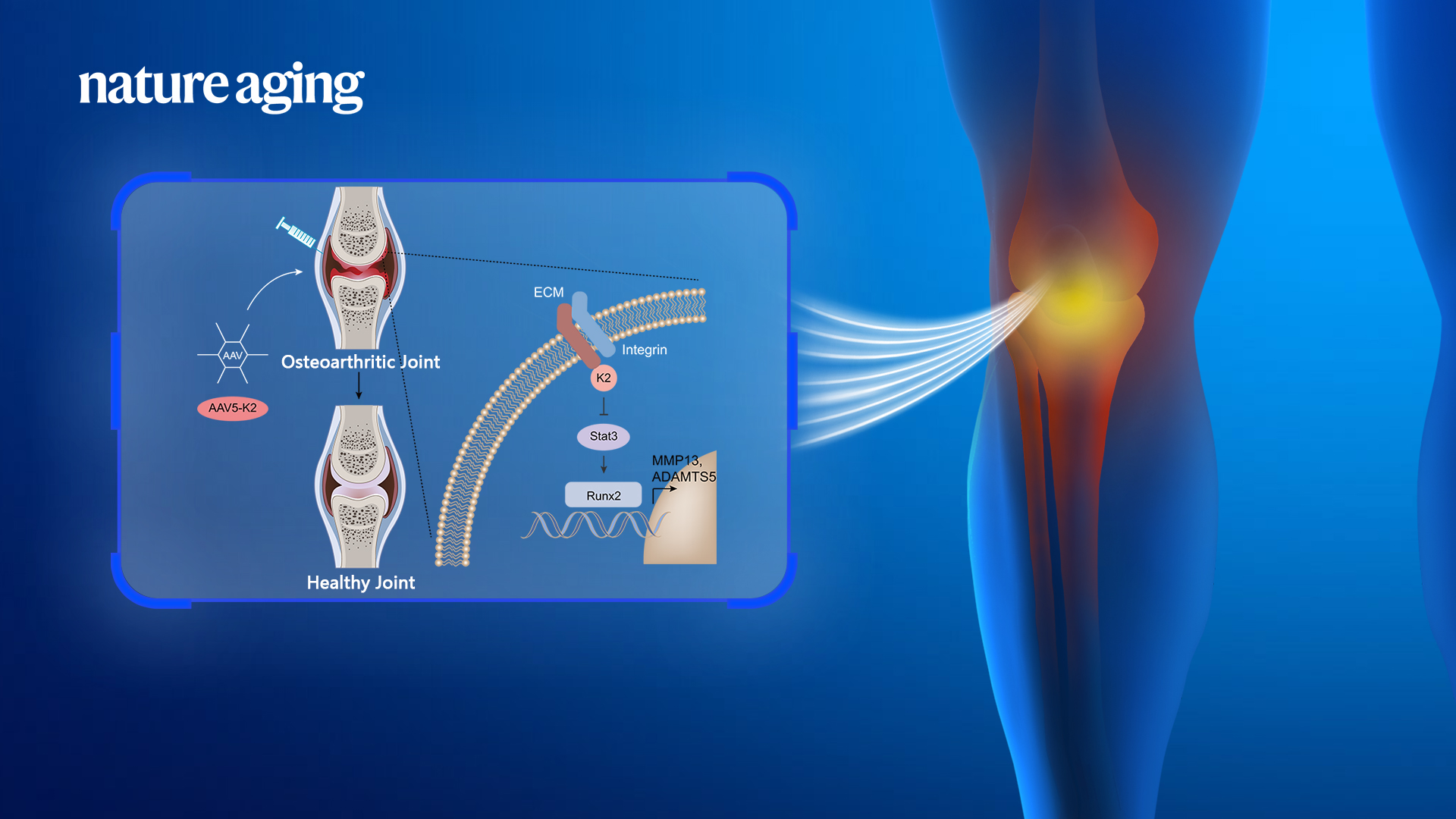Osteoarthritis (OA) is a chronic degenerative joint disease affecting older adults worldwide. It is estimated that the incidence of knee OA is 43.7% in the population aged 80 and over. OA can cause persistent joint pain and disability. Currently, there is no FDA-approved drug for the treatment of OA.
A progressive loss of articular cartilage is a hallmark event of OA pathology. Recent studies have found that pathological factors, such as aging and mechanical stress, can disturb cartilage homeostasis by promoting the hypertrophic differentiation and catabolism of articular chondrocytes, leading to the initiation and progression of OA. However, the underlying molecular mechanism remains largely unknown.

Intraarticular injection of Kindlin-2-expressing adeno-associated virus 5 (AAV5-K2) decelerates the progression of osteoarthritis through modulating the Stat3-Runx2 signal pathway
A research team led by Professor Guozhi Xiao from the School of Medicine at the Southern University of Science and Technology (SUSTech) recently published their study, entitled “Kindlin-2 preserves integrity of the articular cartilage to protect against osteoarthritis”, in Nature Aging, a journal covering research on the biology of aging, geriatrics, gerontology and the impact on society. Their work showed that focal adhesion protein Kindlin-2 plays an important role in maintaining the homeostasis of articular cartilage.
The researchers found that Kindlin-2 is highly expressed in articular chondrocytes of healthy articular cartilage and down-regulated in aged and OA cartilage. To investigate the role of Kindlin-2 in these cells, Prof. Xiao’s team generated a chondrocyte-specific Kindlin-2 knockout (i.e., Kindlin-2fl/fl; AggrecanCreERT2) mouse model and demonstrated that inducible deletion of Kindlin-2 in chondrocytes causes spontaneous OA-like phenotypes in adult mice. Loss of Kindlin-2 promotes mitochondrial oxidative stress and activates Stat3, leading to Runx2-mediated chondrocyte catabolism. More importantly, they proved that intraarticular injection of Kindlin-2-expressing adeno-associated virus 5 (AAV5) decelerates the progression of aging- and instability-induced knee joint OA in C57BL/6 mice. Collectively, these findings reveal a crucial pathway comprising of Kindlin-2, Stat3, and Runx2 in articular chondrocytes responsible for maintaining articular cartilage integrity and defining a potential therapeutic target for OA.
Xiaohao Wu from SUSTech, Yumei Lai from Rush University Medical Center, and Sheng Chen from Huazhong University of Science and Technology (HUST) are the first authors of this study. Prof. Guozhi Xiao and Dr. Huiling Cao from SUSTech, and Prof. Xiaochun Bai from the Southern Medical University are the corresponding authors.
This work was supported in part by the National Key Research and Development Program of China, the National Natural Science Foundation of China (NSFC), the Guangdong Provincial Science and Technology Innovation Council, and the Shenzhen Science and Technology Innovation Commission.
Paper link: https://doi.org/10.1038/s43587-021-00165-w
To read all stories about SUSTech science, subscribe to the monthly SUSTech Newsletter.
Proofread ByAdrian Cremin, Yingying XIA
Photo By